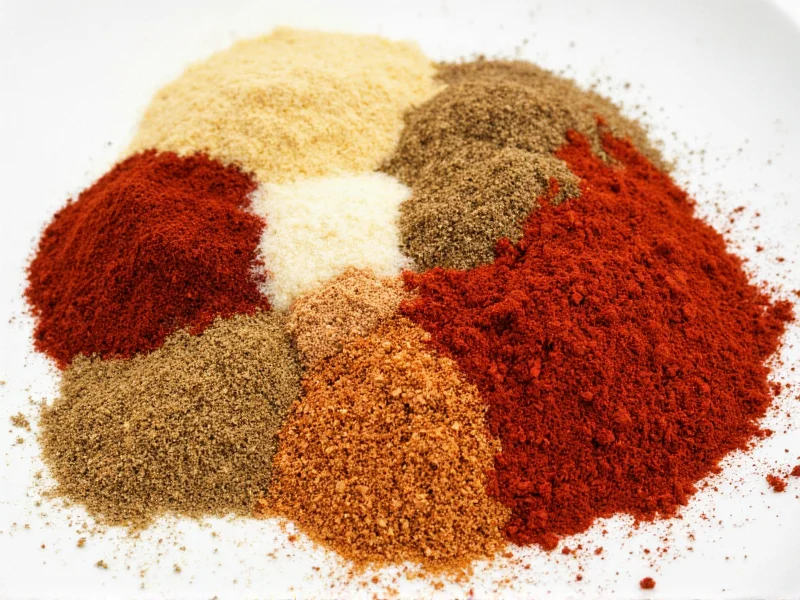Creating a perfectly seasoned stew requires understanding how different spices interact with slow-cooked ingredients. The magic happens when you select spices that complement your protein and vegetables while withstanding long cooking times without losing their essence. Unlike quick-cooking dishes, stews need spices that deepen in flavor as they simmer, creating complex layers that transform simple ingredients into culinary masterpieces.
Essential Spice Categories for Perfect Stews
Successful stew seasoning relies on understanding four fundamental spice categories. Each plays a distinct role in building flavor complexity while standing up to extended cooking. Knowing which spices belong to which category helps you create balanced seasoning profiles that evolve beautifully during the cooking process.
| Spice Category | Best For | Key Spices | When to Add |
|---|---|---|---|
| Earthy Foundation | Beef, lamb, game stews | Bay leaves, thyme, rosemary, marjoram | Beginning of cooking |
| Warm Depth | Hearty winter stews | Cinnamon, allspice, cloves, star anise | Middle phase (1-2 hours in) |
| Smoky Complexity | Barbecue-inspired stews | Smoked paprika, chipotle, cumin | Middle to late phase |
| Fresh Finishing | All stew types | Parsley, tarragon, chives, dill | Last 15 minutes |
Optimal Spice Blends by Stew Type
Not all stews benefit from the same spice profile. The protein and vegetable base determines which spices will shine. Understanding these pairings prevents flavor conflicts and creates harmonious dishes that showcase each ingredient's best qualities. Consider these professional chef-recommended combinations for different stew varieties.
Beef Stew Classic Blend
The traditional beef stew spice combination centers around earthy, robust flavors that complement the meat's richness. For a standard 4-pound beef stew, use: 2 bay leaves, 1 teaspoon dried thyme, 1 teaspoon smoked paprika, 1/2 teaspoon black pepper, and 3 whole cloves. Add these at the beginning except for the paprika, which should go in after the first hour of cooking. This best spices for beef stew combination creates deep, complex flavors without overwhelming the natural beef taste.
Chicken Stew Delicate Profile
Chicken requires lighter seasoning that enhances rather than dominates. Create a balanced herb blend for chicken stew with 1 teaspoon tarragon, 1 teaspoon parsley, 1/2 teaspoon thyme, and a single bay leaf. Add dried herbs at the beginning but reserve fresh herbs until the last 15 minutes. For cream-based chicken stews, a pinch of nutmeg (about 1/8 teaspoon) adds wonderful depth without making the dish taste spicy.
Vegetable Stew Heartiness
Vegetable stews need spices that provide meaty depth without actual meat. The perfect spice mix for vegetable stew includes 1 teaspoon rosemary, 1 teaspoon oregano, 1/2 teaspoon fennel seeds, and 2 bay leaves. Toast the fennel seeds in a dry pan for 30 seconds before adding to release their oils. For umami richness, add 1 tablespoon tomato paste with your spices and cook for 2 minutes before adding liquid.
Timing Techniques for Maximum Flavor Impact
When you add spices to your stew matters as much as which spices you choose. Many home cooks make the mistake of dumping all spices in at once, resulting in either overpowering or underwhelming flavor. Professional chefs carefully time spice additions to maximize each ingredient's contribution to the final dish.
Whole spices like bay leaves, cloves, and cinnamon sticks should go in at the beginning. Their robust structure withstands long cooking while gradually releasing flavor. Dried herbs such as thyme and rosemary work best added in the first hour—they need time to rehydrate and distribute their flavor but will lose potency if added too early. Ground spices like paprika and cumin should join the party in the middle phase (about 1-2 hours into cooking) to prevent bitterness. Always add fresh herbs during the last 15 minutes to preserve their bright flavor and color.
Regional Variations Worth Trying
Exploring global spice traditions can transform your stew game. These culturally authentic spice combinations for different stews bring restaurant-quality results to your kitchen:
- French Bouquet Garni: Tie together 4 sprigs parsley, 2 sprigs thyme, and 1 bay leaf in cheesecloth. Add at beginning and remove before serving.
- Moroccan Lamb Stew: Combine 1 tsp cumin, 1 tsp coriander, 1/2 tsp cinnamon, 1/4 tsp ginger, and a pinch of saffron.
- Spanish Paprika Stew: Use 2 tbsp sweet paprika and 1 tsp smoked paprika with garlic and saffron threads.
- American Southern Influence: Add 1/2 tsp celery seed, 1/4 tsp red pepper flakes, and a dash of apple cider vinegar at the end.
Avoiding Common Spice Mistakes
Even experienced cooks sometimes miss these critical stew seasoning tips. Avoid these pitfalls to ensure perfect results every time:
Over-salting early: Salt draws moisture from ingredients, so add only 1/4 teaspoon per pound at the beginning, then adjust at the end. The longer stews cook, the more concentrated the salt becomes.
Skipping the bloom step: For ground spices, sauté them in oil or fat for 30-60 seconds before adding liquid. This how to season stew properly technique unlocks their full flavor potential through the Maillard reaction.
Ignoring acid balance: A splash of vinegar or lemon juice at the end brightens flavors that may have become muted during cooking. Start with 1 teaspoon for a standard pot and adjust to taste.
Troubleshooting Spice Issues
Even with careful planning, sometimes spice problems in stews occur. Here's how to fix common issues:
- Too spicy? Add dairy (1/4 cup cream or yogurt) or starch (1/2 cup cooked beans mashed). Never add more liquid as it dilutes all flavors.
- Not flavorful enough? Create a flavor paste: Mix 1 tbsp tomato paste, 1 tsp soy sauce, and 1/2 tsp miso. Simmer 10 minutes to deepen flavors.
- Bitter flavors? Balance with sweetness (1 tsp honey) or acid (1 tsp vinegar). Bitterness often comes from overcooked herbs or burnt spices.











 浙公网安备
33010002000092号
浙公网安备
33010002000092号 浙B2-20120091-4
浙B2-20120091-4